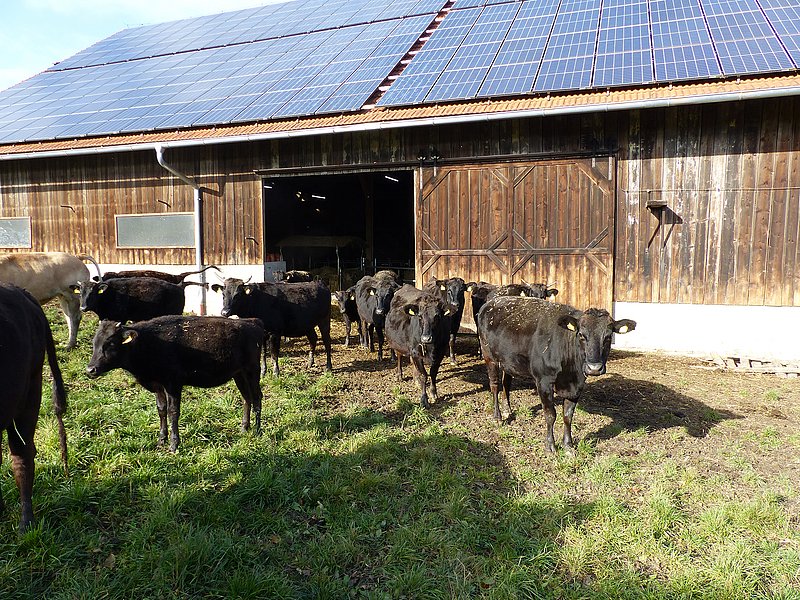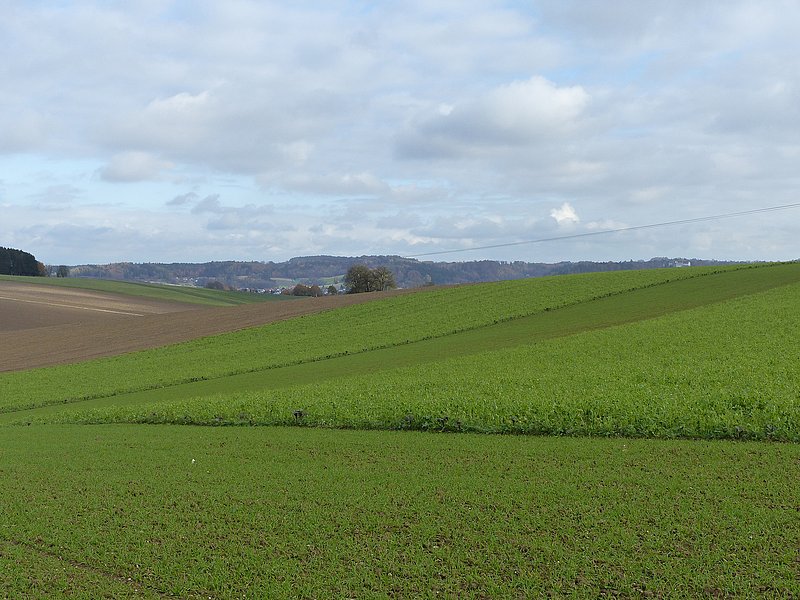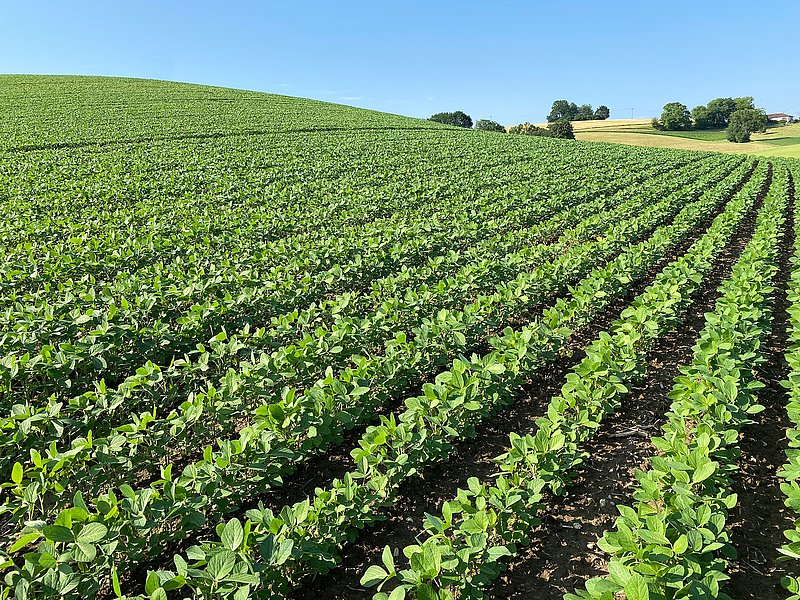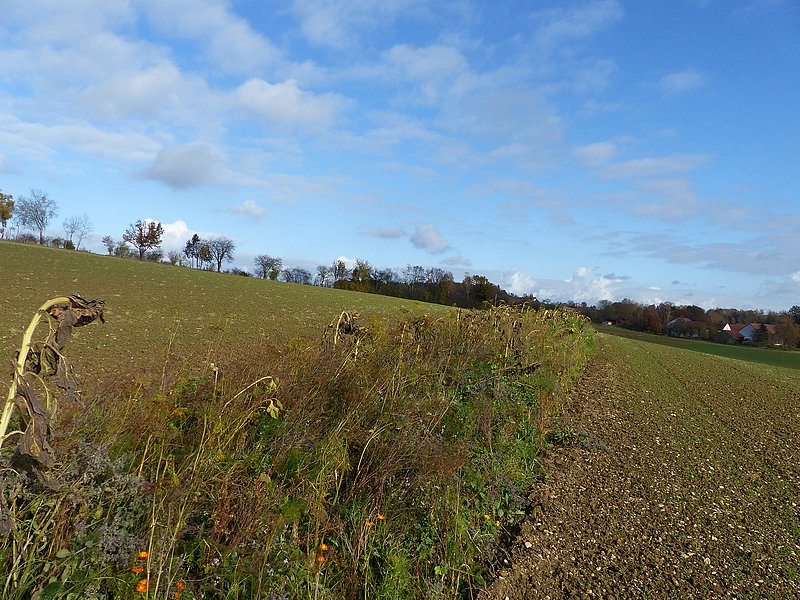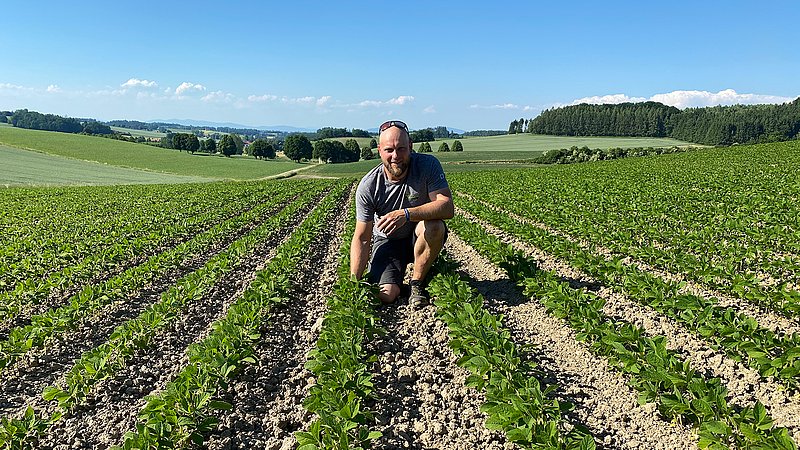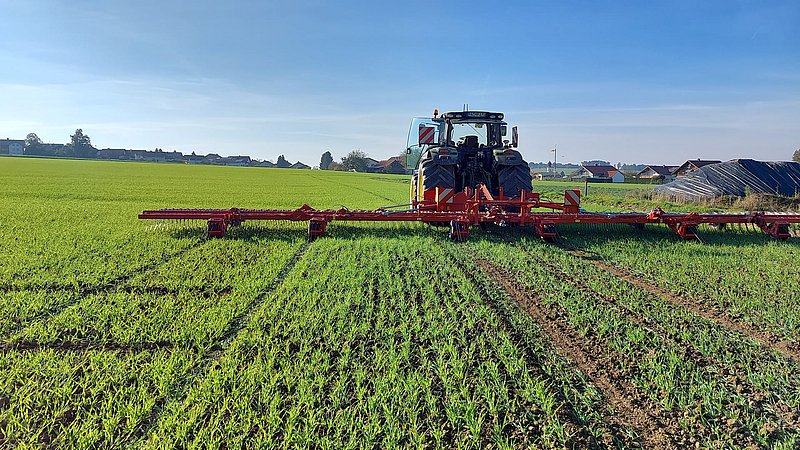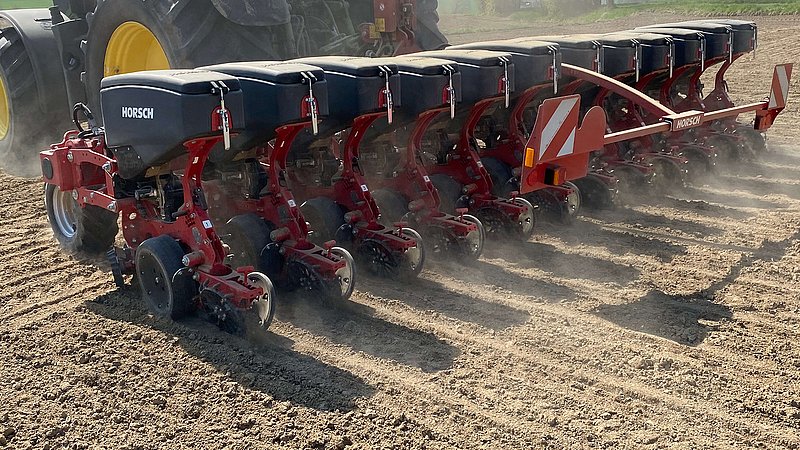Closing cycles
Georg Mayerhofer is a farmer with ideas. He is not afraid of trying new things and is quite successful in doing so. However, he still is looking for new methods to prepare his farm sustainably for the future. terraHORSCH visited him in Ortenburg/Lower Bavaria.
When we visited him at the beginning of November Georg Mayerhofer actually was rather tight for time. The maize combining season still is in full swing. And thus, he regularly has to check on the drying plant. But finally, he spent more time with us than originally planned. For he has a lot to show and to tell.
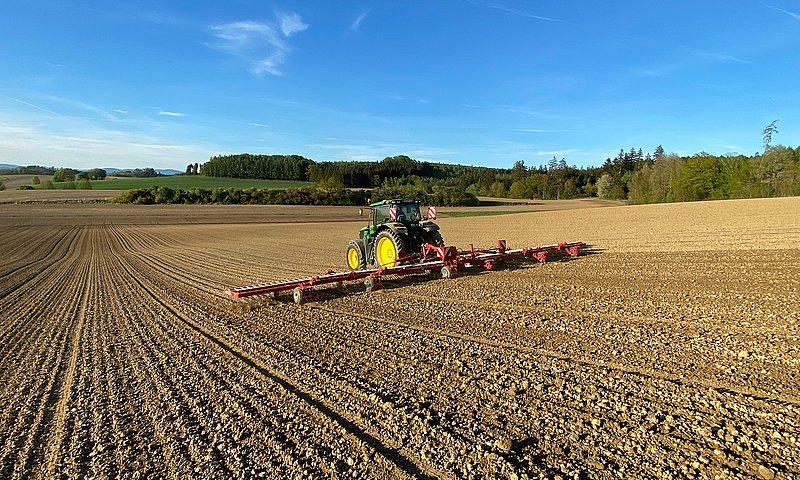
Georg Mayerhofer became well known in Germany when in 2017 he was awarded the title „Farmer of the Year” at the Ceres Award. Already at that time the jury confirmed that he was not afraid of using new methods and even improve them. This for example is true when it comes to the topic of StripTill. Georg Mayerhofer modified a customary StripTill tool in such a way that he was able to additionally spread digestate with a special hosing. “StripTill has proven its worth on my farm“, the farmer tells us. “Although our soils are sandy and clayey, and a lot of colleagues advised me against it. Erosion protection is particularly important in our region. And I grow row crops that have to be fertilised. With strips diagonally to the slope and a soil-conserving approach of not driving on the catch crops with a large tank it really was an excellent system. The more so as we incorporated the digestate very shallowly at only about 15 cm. But for me, the problem of this strategy was glyphosate. Without it, this method does not work. For my farm, however, I was looking for a long-term perspective without being dependent on agricultural chemistry in general and on a special agent in particular. This is why at the moment we are right in the middle of converting to organic farming. I have already thought about focussing more on hybrid farming for quite some time. I have already tested some things like rape cultivation without insecticides. And it worked really well. But honestly: the price is not ok. Despite negotiations for example via the DLG Sustainability Certificate the trade was not ready to pay a little bit more. What additionally tipped the scale was the fact that we have 1,450 fattening places for pigs. Animal welfare has been an important issue for us for quite some time, for example by means of a lower occupancy rate and the creation of play areas. But conventional pig keeping on a fully slatted floor surely isn’t a forward-looking model.”
Conversion to organic farming
Georg Mayerhofer converted his 350 ha of arable land on the 1st of July 2021. He deliberately decided to become a member of the Naturland association: “What I particularly like about it is that the association is big and international”, he says. “In a globalised world this is of major importance. And I can still take my own decisions. But there are also social components. For example, an hour conversation between the piglet producer and the fattener. It is fair and both sides earn money. So far, I have not been keeping organic pigs, but I am looking forward to tackling this topic soon.”
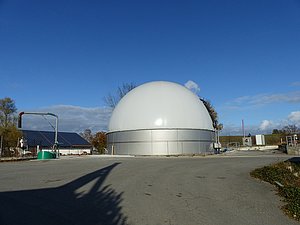
One crucial point, however, was the biogas plant. Mayerhofer holds a share of 75 %, a conventionally farming colleague 25 %. The farmer wants to keep up this relationship. Otherwise, the partnership agreement would have to be cancelled. But now he is allowed to use 30 % of external vegetable substrate. An additional factor was that due to the conversion there is less liquid manure. The plant, however, is operated with heat and liquid manure bonus. But as next year the funding period expires, new framework conditions will apply anyway.
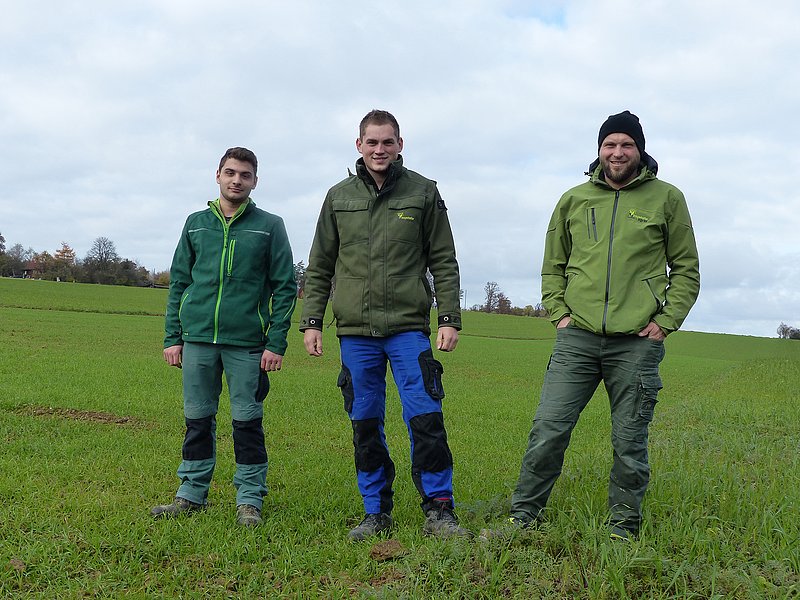
Georg Mayerhofer can hardly wait to really get going with organic farming. He is particularly curious about special crops. But he already knows quite a lot. “I particularly like the approaches of regenerative farming with a permanent plant cover and only minimum interference in the soil”, the farmer explains. “I have already seen many good practical examples for this method, and I have already gathered some experience myself. We have also been working without a plough for quite some years. But I am not ideological about it. Whenever it is possible, I do without a plough, if it is necessary, I use it. Like for example this year. Because of the wet conditions during the harvest, I ploughed some fields. The result is significantly better than on the fields where I just used a cultivator. You still see every combine track. In total, it is my objective to combine the regenerative idea with organic farming”. In this respect his focus also is on building up humus. “For because of the climate and the resulting erosion by wind and water we will have to do a lot in this respect”, the farmer is convinced.
Strict division
At the moment Georg Mayerhofer is gaining experiences. For the conversion period he integrated 40 ha of grass clover and vetch grown in association with rye into the rotation. The vetch-rye combination sets the stage for buckwheat.
All of his fields are divided into the two categories „can be hoed“ or „cannot be hoed“. This means: on slopes he does not grow maize or soya. Organic sugar beets would be interesting, too, but at the moment the farm does not have a corresponding contingent. When the field is only a little bit hilly, Mayerhofer lays erosion strips which are 15 or 30 m wide. On these strips he mainly grows vetch in association with rye plus underseeds. They are not fertilised. The objective is to mow in July for the first time and if possible two more times. What completes this system: the swath is used for the biogas plant.
The remainder of the fields are covered with high-quality catch crops with hardy components. After as little tillage as possible the row crops can be sown in spring. For his professional colleagues, Mayerhofer’s fields surely take getting used to. While they are trying to get as large fields as possible, Mayerhofer deliberately creates interruptions. According to Mayerhofer, the additional effort, however, is rather limited.
„With a wide rotation and the permanent plant cover we want to meet the requirements of the time”, Georg Mayerhofer says. “What this rotation will exactly look like, still has to be decided. I usually plan two years ahead. In addition to soya, quinoa and buckwheat, sunflowers and amaranth in organic quality surely are interesting. With regard to the intensive row crops we will organise rotation in such a way that clover grass or vetch grown in association with rye are regularly part of it. Currently, we grow silage maize, soybeans, winter wheat, winter triticale, winter barley, winter field beans, cup-plant and some oat. In the conversion year we did not grow winter rape or winter durum. In addition, there are clover grass, vetch grown in association with rye and vetch grown in association with rye Plus which all are not fertilised. Moreover, I sowed ryegrass as a permanent plant cover.”
It depends on the people
The farmer is very satisfied with his current team: “The exchange with Sebastian Ernst, my full-time employee, is excellent. He is a real plant production pro. We discuss a lot about our ideas and together we develop the farm further. Martin Grubber, our current apprentice, too, fits perfectly into our team. And my experience with trainees also is very good. Moreover, there are three employees who work on a 450 Euro basis. They mainly drive the tractors or like Georg work with the animals. And, of course, my father supports us whenever he can.”
Regarding tractors. At the moment, there are three of them at the farm. Georg Mayerhofer is planning on buying another one. The power of the largest amounts to 250 hp. The farm also has its own combine. In total, however, Georg Mayerhofer is not over-mechanised. If possible, he and his colleagues use machines in a co-operative. Though, in Mayerhofer’s opinion, hoeing and harrowing have to be carried out absolutely on time. He already owns a Transformer VF, a hoe with 6 m working width, and he is planning to buy a harrow next year. He has already decided on a HORSCH Cura. “The machines convince me from a technical point of view”, the farmer says. “I have already been working with HORSCH for quite some time. Our philosophies simply match up. We are both interested in continuously developing things further. Moreover, I find the personal contact and the professional discussions with the employees extremely inspiring. But I still sold my HORSCH sprayer quite recently for obvious reasons”, Georg Mayerhofer adds with a smile.
GIS is essential
Georg Mayerhofer attaches major importance to the use of Geo-Information-Systems. He primarily works with the JD Operations Center that integrates data like yield mapping or track management in Farm Facts. And it would not work without IT. Currently 120 fields are cultivated (18 maize, 17 wheat, 9 barley) which often are accompanied additionally by erosion strips. But the farmer is quite positive about this high number: “Thus, we have the option to make changes in the rotation. And it has a positive effect on biodiversity.”
Especially the latter topic is important to Georg Mayerhofer. During our tour we pass a field with a six-meter-wide strip with a colourful plant mixture in the middle. “This is our beetle bank. We set it up to provide a habitat for microbes, but also for birds“, Georg Mayerhofer explains. “This is part of a research program and is accompanied scientifically.”
Perspective
It is still open what will happen to the pig fattening sector within the scope of the organic farm. But Georg Mayerhofer is full of plans. “It would fit quite well into the farm, especially with regard to the current prices for organic pigs. I think about rebuilding the stables and only using three of the five stables. But I will take my time with this decision. There is no pressure. The stables are paid, and my father kept them in a very good condition. But it would be interesting to refine the own organic fodder. The only difficulty I see is the purchasing of the piglets.” This would be in line with another idea which is already being put into practice: the production of high-quality Wagyu beef. Georg Mayerhofer is already setting up a herd. However, he will only start with the production of meat when he has the required number of animals. He explains his plans: “The cattle are at a separate farmstead. I can use a winter stable, and I could also extend it. There are pastures I can mow first and then corral. The final fattening is to be made with our own protein fodder. Even if my employees and I are passionate arable farmers – we should always think in cycles. And livestock farming simply is part of it.”
